Suppose we have an increasing sequence of positive integers {an}. We can investigate some of the sequences spectral properties through the function fN(x) = sum_i=1,N cos(anx). The function is periodic with period 2pi, so when plotting we need only consider 0 ≤ x ≤ 2 π.
For any sequence, we have f(0,N) = f(2pi,N) =N .
Note that, since an is an integer, then cos(anx)=cos(an(2pi-x)) for all sequences and all x. As a result, all plots of fN(x) will be symmetric about x=pi.
If the sequence is essentially random, we can expect fN(x) to be roughly the size of the square root of N. So by noting where the fN(x) is large in magnitude can indicate a tendency to be distributed in certain ways with respect to certain frequencies.
For example, consider the sequence {an} = {5n}. Calculating fN(x) for this sequence, we find that fN(x) = 100 exactly when x is a multiple of 2pi/5, and otherwise it is much smaller.
This tells use that the waveform created by the seqence {5n} will have peaks at intervals of 2pi/(2pi/5 = 5, which is no big surprise, of course. However, working with any sequence, this method can be used to find strong spectral components of the waveform, by observing for what values of x fN(x) is large.
Let's look at fN(x) for the sequence of primes. Let's use N=300. In GP, we can generate a list of the values of f(x,N) = sum(cos( prime_i x)) where i runs from 1 to N and prime_i is the i-th prime. In GP, execute the following commands:
f(x,N) = sum(i=1,N,cos(prime(i)*x)) for(j=0,10000,print(f(j*2*Pi/10000,300)))Read the output into R and plot:
> primes1 <- scan("primes300-10000.txt")
> plot(primes1,xlim=c(0,10000),cex=0.1)
> lines((primes1))
The output x axes is labeled with the index of the point plotted.
So the point with x coordinate m has actual x value 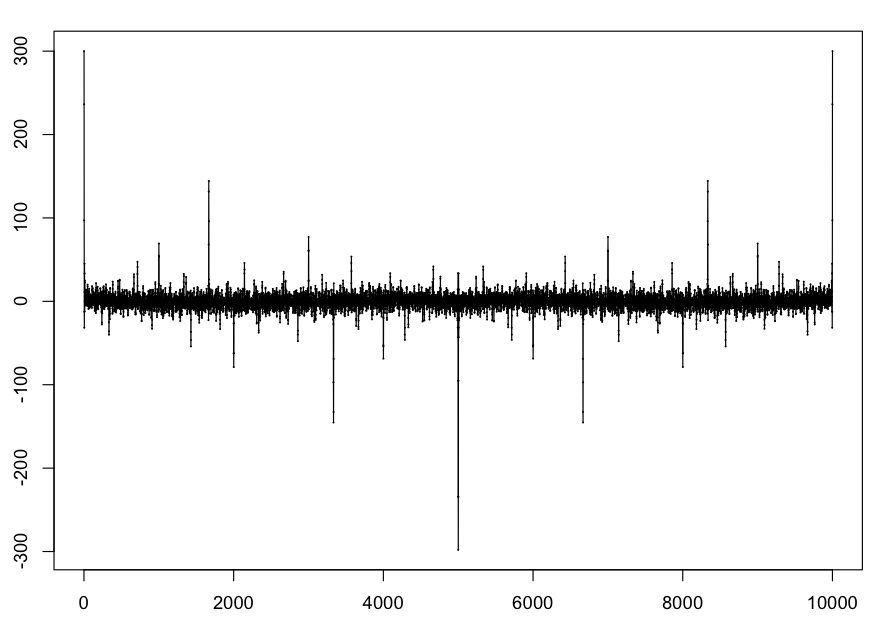
Let's observe some features of this plot:
For the primes sequence, the prominent spikes in the plot of f(x,N) correspond to spectral lines in the spectrograms of the waveforms we make: if the spike is at x, then the frquency in the spectrogram is 44100x/(2pi). Note that we only plot the spectrograms up to the Nyquist frequency (half the sampling rate, 44100/2-22050).
Also, the spectrogram and the "plot spectrum" functions in Audacity only consider the absolute values of the spectral components, so it be sometimes useful to use the R command
> plot(abs(primes1),xlim=c(0,10000),cex=0.1) > lines(abs(primes1))to get a more easily comparable figure. Here is the result for the command above:
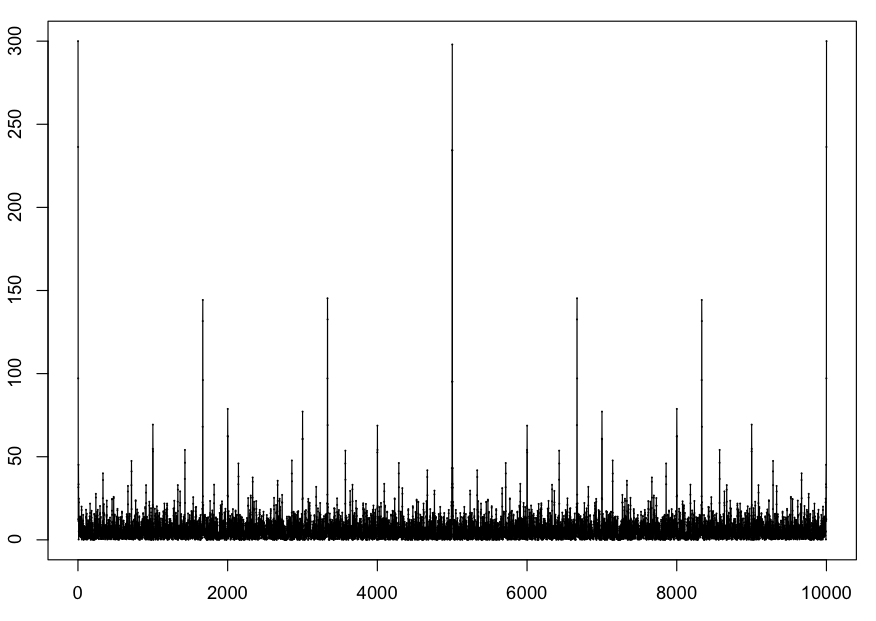
The ulam sequence is defined here. Here is a plot of f(x,500) for this sequence, with 10000 points.
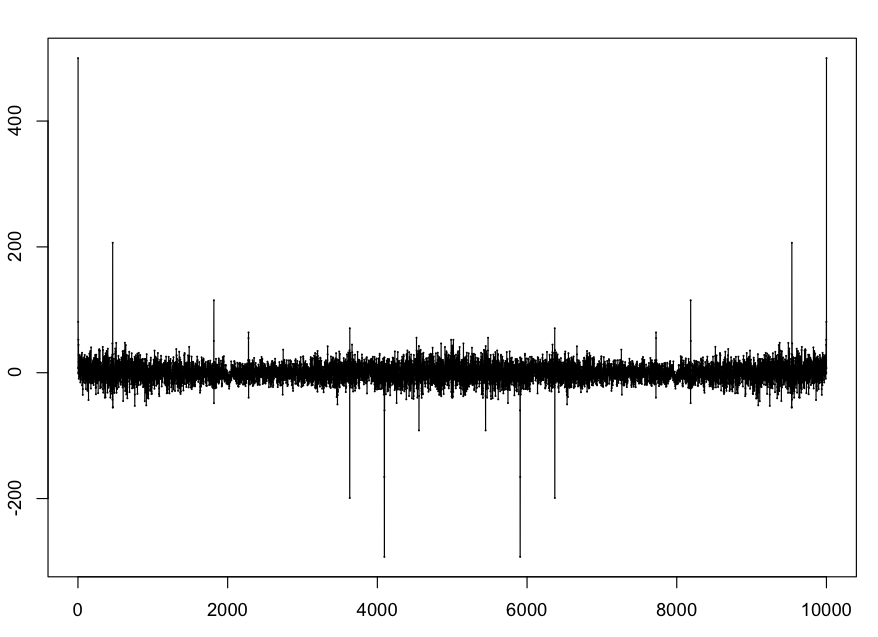
The spike at around 464 (i.e., 0.29154) corresponds to the line in the spectrograph of our waveform for this sequence at approximately 2046 hz. This also corresponds to the known "clumping" phenomenon of the sequence which has period 21.6 (44100/2046 is about 21.6).
The major negative spike around the 4000th point is at x=2.57... . Stefan Steinerberger has shown the surprising fact that there exists a value A=2.57... such that, with only four exceptions, for all Ulam numbers an up to (at least) 107, cos(Aan)<0. This 2.57.. value corresponds to a spectral line around 18048 hz that is visible in the spectrogram for the soundfile:
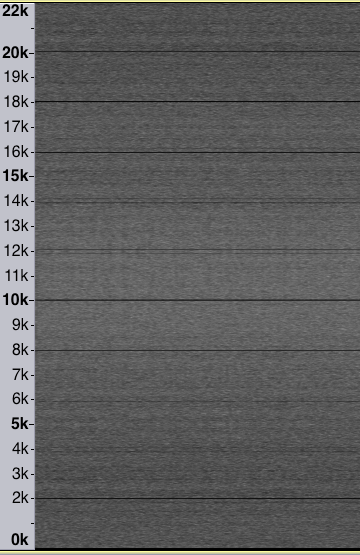
The Beatty sequence of the square root of 2 is the sequence an = floor( nb ) where b is the square root of 2.
Here is the plot with N=500 and 10000 points.
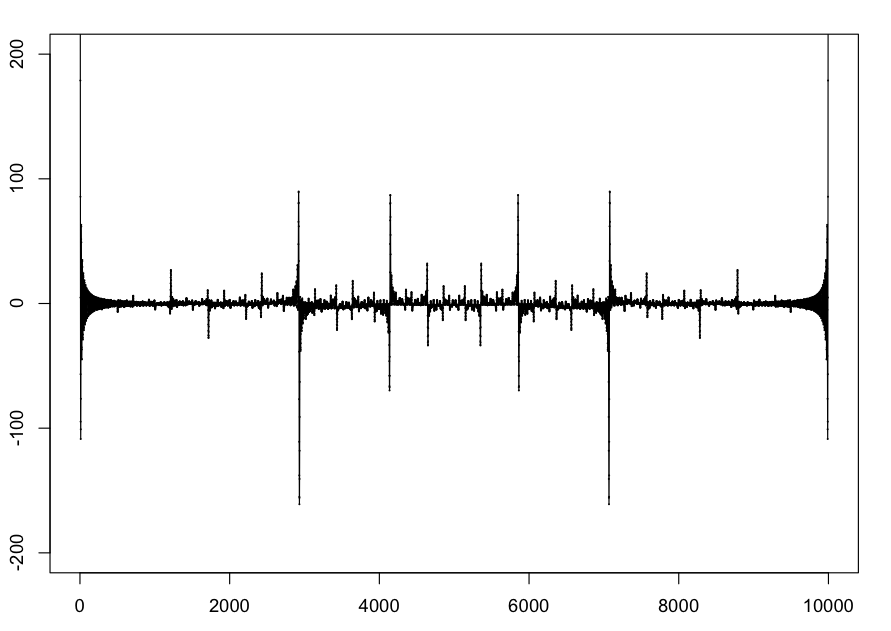
This one seems to have the possibly interesting feature of having large positive and negative spikes quite close together.